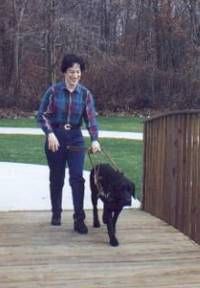Forming a Team
The final stage of a guide dog's training is learning to work with its new master. Guide dog training schools work very hard to match handlers with guide dogs according to the compatibility of their personalities. A very energetic dog typically does well with a young handler, while an older handler may need an especially careful partner. Schools often have a special gathering to commemorate the time when a new class of guide dogs finally meet their masters. Often, the dog's puppy raiser attends and meets with the new master as well. This is perhaps the most emotional time in the entire training process.
After this introduction, guide dog instructors typically spend a month helping the new team learn to work together. Many schools have dormitories for the handlers to stay in during this final stage of training.
Advertisement
If the handler has never used a guide dog before, a lot of the instructor's work at this point is actually people-training, not dog-training. The handler has to learn to read the dog's movements, so he or she knows when the dog is turning or when the dog is stopping for a crosswalk or stairs. Additionally, the handler has to learn all the commands the dog knows, and must get some practice walking with the dog. The dog has to make the transition from obeying the instructor to recognizing the handler as its new master. The handler and the dog spend a lot of this time just getting to know each other, so they are comfortable enough to work as a team. By the time they graduate from the guide dog school, they can read each other's every movement.
